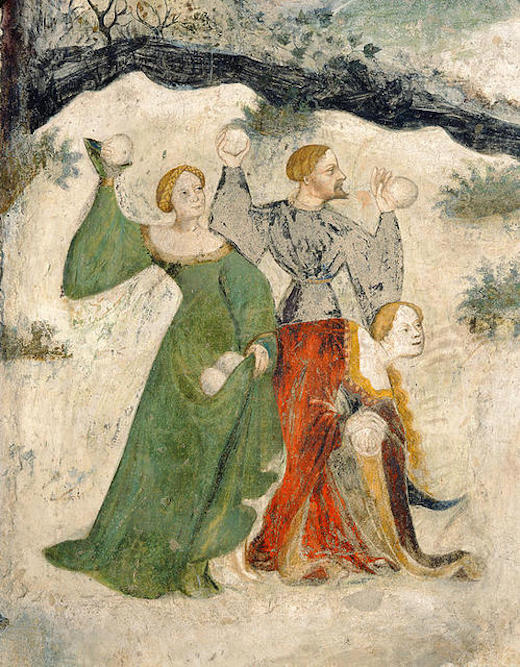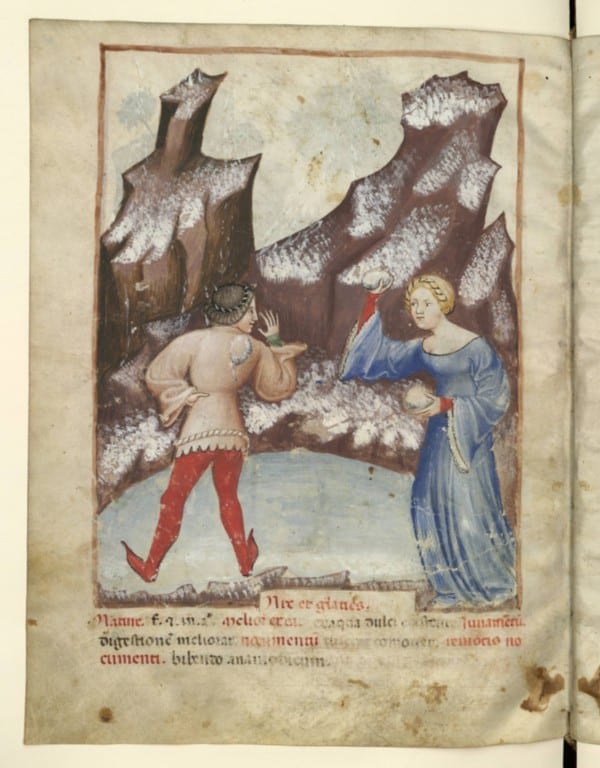Before the advent of the motion picture, humanity had the theater — but we also had paintings. Though physically still by definition, paint on canvas could, in the hands of a sufficiently imaginative master, seem actually to move. Arguably this could even be pulled off with ochre and charcoal on the wall of a cave, if you credit the theory that paleolithic paintings constitute the earliest form of cinema. More famously, and much more recently, Rembrandt imbued his masterpiece The Night Watch with the illusion of movement. But over in Italy another painter, also working on a large scale, pulled it off differently two centuries earlier. The artist was Paolo Uccello, and the painting is The Battle of San Romano.
“The set of three paintings depicts the harrowing details of an epic confrontation between Florentine and Sienese armies in 1432,” writes Meghan Oretsky at Vimeo, which selected Swiss filmmaker Georges Schwizgebel’s short animated adaptation of the triptych as a Staff Pick Premiere. Completed in 2017, the film’s beginnings go back to 1962, when Schwizgebel was a gallery-touring art student in Italy.
“Even though I wasn’t normally moved by old paintings, this one made a strong impression on me and still does today,” he tells Vimeo. “I was also inspired by the use of cycles, or loops, which suited a moving version of this image perfectly.” Schwizgebel executed the animation itself over the course of six months, foregoing computer technology and painting each frame with acrylic on glass.
Scored by composer Judith Gruber-Stitzer, Schwizgebel’s “The Battle of San Romano” constitutes a kind of shape-shifting tour of the painting that first captivated him half a century ago. But what he would have seen at the Uffizi Gallery is only one third of Uccello’s composition, albeit the third that art historians consider central. The other two reside at the Louvre and the National Gallery, and you can see the latter’s piece discussed by Director of Collections and Research Caroline Campbell in the video above. Schwizgebel is hardly the first to react boldly to The Battle of San Romano; in the 15th century, Lorenzo de’ Medici was sufficiently moved to buy one part, then have the other two stolen and brought to his palace. If that’s the kind of act it has the power to inspire, perhaps it’s for the best that the triptych’s union didn’t last.
Related Content:
Edvard Munch’s Famous Painting “The Scream” Animated to Pink Floyd’s Primal Music
13 Van Gogh’s Paintings Painstakingly Brought to Life with 3D Animation & Visual Mapping
William Blake’s Paintings Come to Life in Two Animations
Late Rembrandts Come to Life: Watch Animations of Paintings Now on Display at the Rijksmuseum
Dripped: An Animated Tribute to Jackson Pollock’s Signature Painting Technique
Based in Seoul, Colin Marshall writes and broadcasts on cities and culture. His projects include the book The Stateless City: a Walk through 21st-Century Los Angeles and the video series The City in Cinema. Follow him on Twitter at @colinmarshall or on Facebook.











